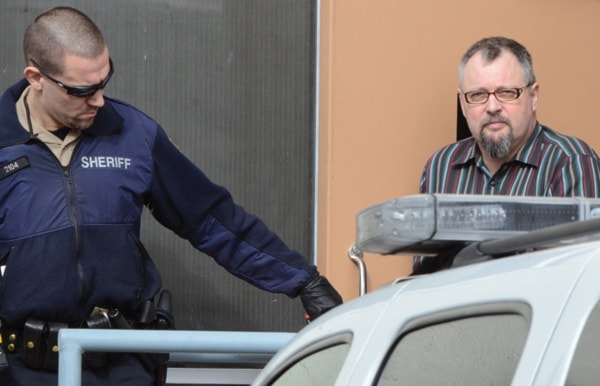The fate of the man accused of a double murder in Princeton will soon be in the hands of 12 jurors.
The closing arguments were made in the case of John Ike Koopmans, 51, in B.C. Supreme Court in Penticton Tuesday.
Koopmans is charged with two counts of murder in relation to the deaths of Robert Keith Wharton, 43, and Rosemary Fox, 32, and one count of attempted murder relating to the shooting of Bradley Martin, 51.
Before beginning his closing arguments, defence counsel Don Skogstad said that despite a court order, Koopmans was unable to call his girlfriend over the Easter weekend.
“Their response to your order is ‘we’ll think about it,’” Skogstad said, calling it “deliberate arrogance” from those involved.
Skogstad also noted that Koopmans was unable to shower or brush his teeth upon arriving in Penticton and that even he had difficulties meeting his client in person and receiving phone calls from Koopmans.
Before he began reviewing the evidence, Skogstad noted the length of the now three month long trial.
“It’s been a long, long trial. This is about as long as they get in this area,” Skogstad said.
Skogstad reminded the jurors of their duty as well.
“You’re in control here, you’re in charge. Not myself, not my friend, not the judge,” he said.
He said the evidence that was presented over the last few months “does not prove the case” and there were inconsistencies and anomalies to be explored.
Crown prosecutor Frank Dubenski disagreed in his closing arguments saying that the case comes down to basic facts.
Dubenski began by listing out the key facts including the blood stains on Koopmans’ jeans and jacket, the radiating blood spatter confirmed by experts, the ammunition for a .357 handgun and a holster found at Elaine Hoiland’s residence on the night of the incident and a swab from the bullets testing positive for Koopmans’ DNA.
“It’s not a question of who did this, but why they did this,” Dubenski said.
Dubenski classified the discovery of the alleged murder weapon in the Similkameen river as “good police work” saying that investigators located a boot print, connected the leaves in the area with the leaves found in Koopmans boot upon his arrest and connected the dots to locate the gun in the river.
Skogstad’s closing arguments started by focusing on the testimony of Bradley Martin, the lone eye witness who testified he was shot on March 30, 2013 by Koopmans.
Skogstad called him “opaquely unreliable” pointing to contradicting statements from emergency personnel on the scene who denied that they tried to prevent Martin from getting in to the ambulance that night.
The testimony from police and EMTs on the scene also contradicted what Skogstad called “one of the most unusual pieces of evidence I had ever heard in my career” when Martin said he was asked for his height and weight in metric by the responding officer before allowing him into the ambulance.
Skogstad pointed out that Martin incorrectly identified what Wharton was wearing the night of the alleged shooting, which was refuted by photos of the crime scene.
Crown counsel Frank Dubenski asked the jury to give Martin “latitude” when considering his testimony.
“Minor discrepancies are understandable,” Dubenski said, noting that Martin would be in emotional distress and was “fearing for his life” after being shot in the chest.
Skogstad also classified the testimony from an acquaintance of Koopmans, Steve Corlette-Parolin, as unreliable.
“He is so completely devoid of credibility you have to wonder why you were even troubled to listen to him,” Skogstad said.
Skogstad pointed out that there is an unsolved murder nearby in Hedley and he was unable to use information related to that case due to holdback evidence the RCMP is unable to disclose.
He also talked briefly about the charge and the options the jury is presented with. He said first degree murder requires prior planning and deliberation. He noted the receipts produced as evidence from a grocery store in Princeton that coincided with both Koopmans’ and his former girlfriend Elaine Hoiland’s testimonies that they were going to have an Easter dinner of steak and crab legs that night.
“What was planned and deliberate was dinner,” Skogstad said.
He asked how the jury would feel if years down the road someone made a confession to a murder accounted for the gun in the Similkameen River.
“If you get uneasy about that — that’s what reasonable doubt is,” Skogstad said.
“Reasonable doubt is not speculation and needs to be based on logic,” Dubenski said.
He asked the jury to not to focus on the credibility of a single piece of evidence.
“Look at everything, and that should leave you with one conclusion, that he is the killer,” Dubenski said.
